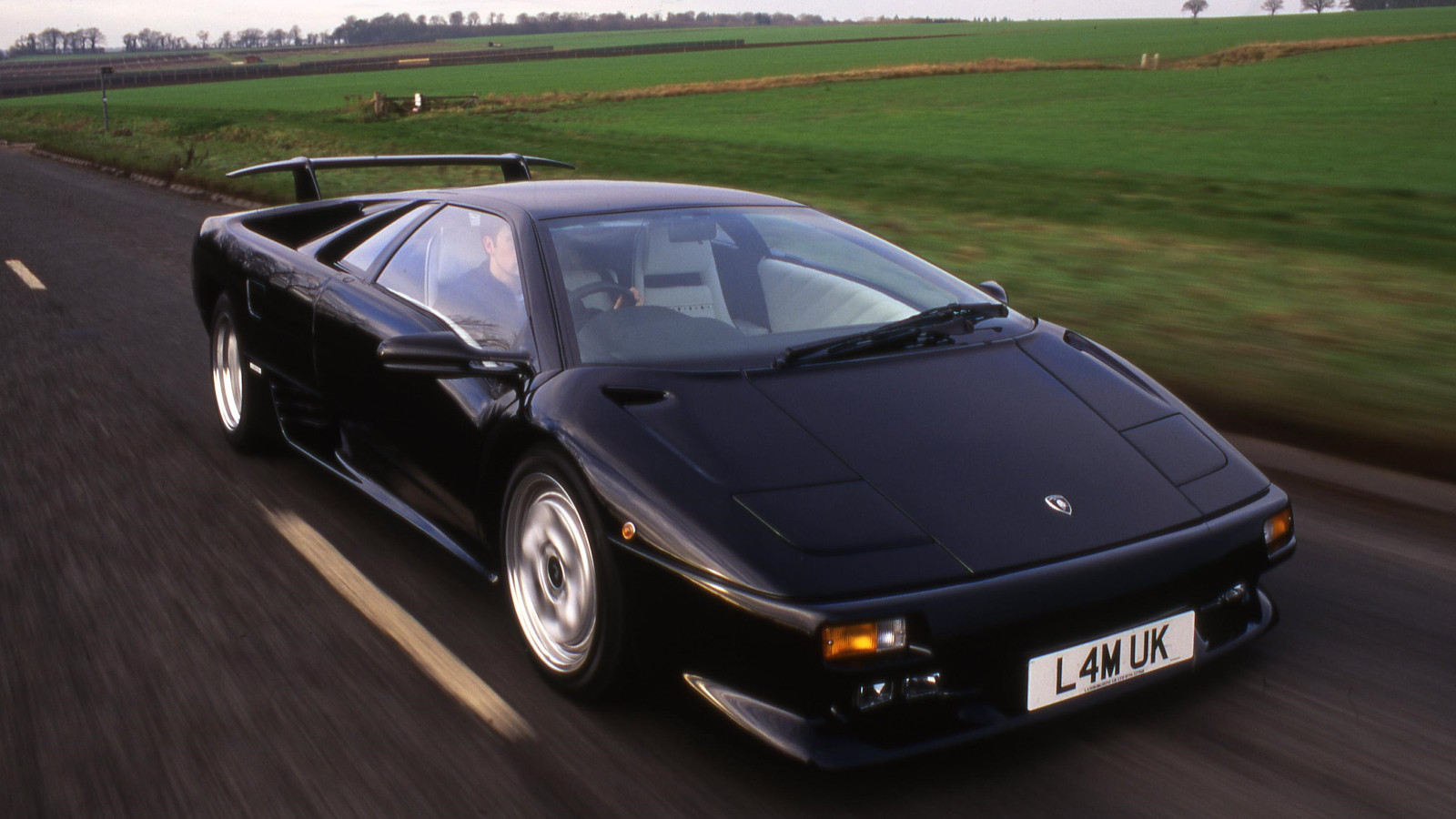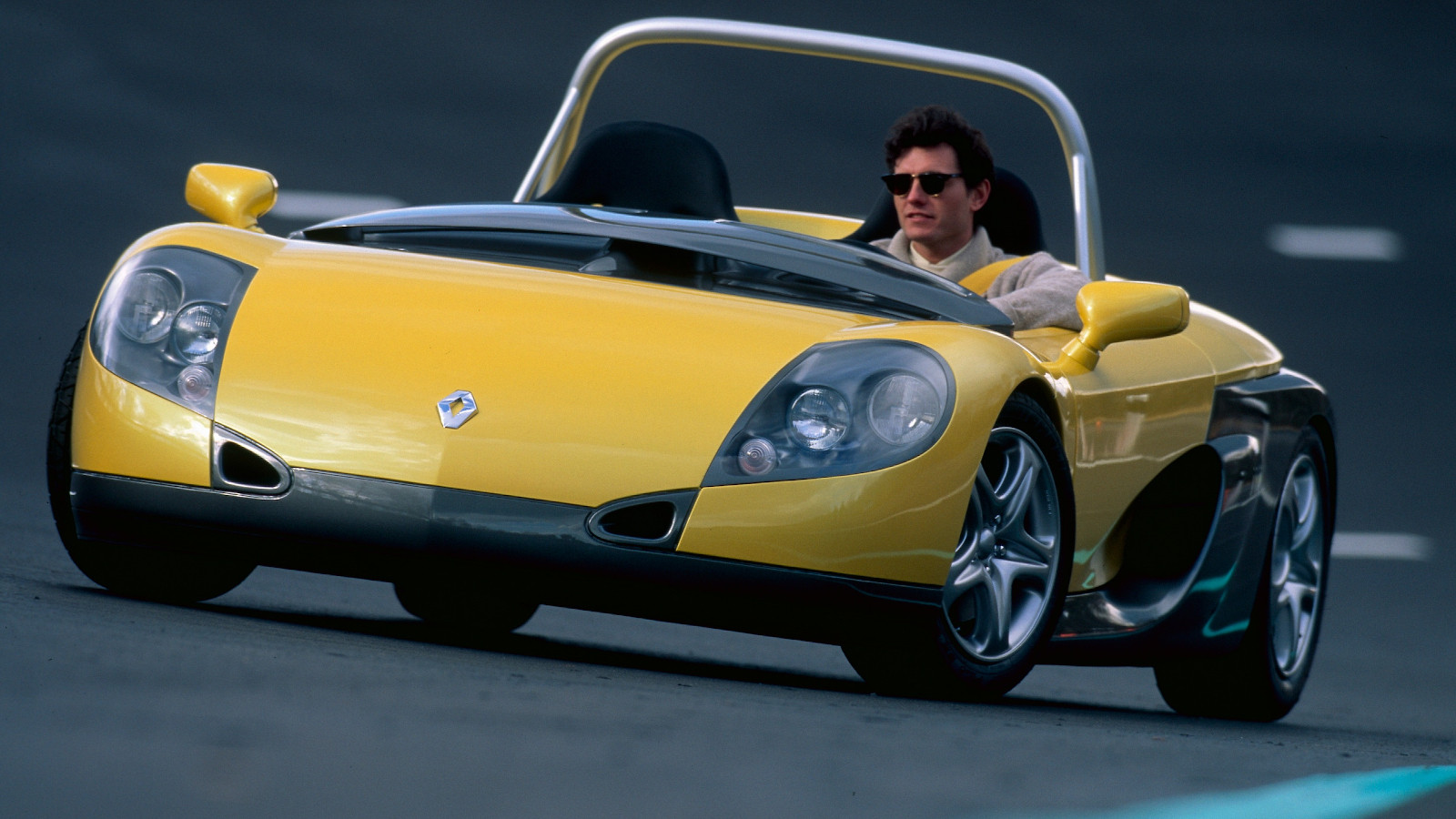




















Let’s get this party startled!
As October draws to a close, what true motoring enthusiast can possibly fail to notice the large number of cars whose names appear to have been inspired by Halloween? Not us, that’s for sure.
Okay, we haven’t found one called the pumpkin yet (though we’re sure it’s out there), but creepy-crawlies, spiritual beings and other concepts of a worrying nature are, and nearly always have been, featured in car-price lists.
Enjoy our fun, fang-tastic (sorry!) list of Halloween classic cars in alphabetical order just in time for 31 October – there might even be some you’ve not heard of, while others could prove eerie-sistible (we’ll stop the puns now, we promise).
1. Banshee
A banshee is a female Irish spirit who announces the death of a family member by wailing or shrieking, when what the bereaved person really requires is a cup of tea, a biscuit and a sympathetic chat.
Pontiac used the name for a series of concepts in 1964. Somebody at GM must have liked the idea, because the name was used again in 1968, then again in 1974 and one more time in 1988.
The last example, pictured above, influenced the styling of the fourth-generation Pontiac Firebird, which went on sale in 1993.
2. Cerbera
The TVR Cerbera of 1996 was, unusually for the Blackpool-based company, a 2+2 hardtop, and had a V8 engine designed by Al Melling and built-in house rather than the Rover unit TVR had used previously.
The name means nothing in particular but is derived from ‘Cerberus’. Cerberus was a dog with, depending on which source you believe, a variable number of heads and bodies, and may also have been part-snake.
It guarded the underworld and was probably quite good at that, though if you want a pet we’d recommend trying a hamster first.
3. Chimaera
Four years before the Cerbera came along, TVR launched the Rover V8-powered Chimaera. As with the later car, its name was a deliberate mis-spelling of something you’d prefer not to encounter on 31 October – or, indeed, ever.
The Chimera was a fire-breathing creature from Greek mythology with the head of a lion in the usual place, that of a goat sticking out of its back and one from a snake, or perhaps dragon, at the end of its tail.
The TVR named after it was mild by comparison.
4. Cobra
You know what a cobra is. Snake. Venomous. Avoid.
You also know what a Cobra is. The original was a British AC Ace Americanised in the 1960s by Carroll Shelby, who put first a 4.7-litre Ford Windsor engine and later a 7.0-litre Ford FE under the bonnet.
There have been several continuation models, one of the most recent of which has an electric powertrain. Whether Shelby would have appreciated this development is open to question.
5. Demon
According to early definitions, a demon is a supernatural being which is not necessarily evil, but the word’s modern usage suggests something unspeakably horrid.
Dodge used the Demon name for a fastback version of its Dart model in 1971, and later for a 2007 concept car and a spectacularly powerful (we’re talking over 800bhp) variant of the Challenger. There’s a snigger-worthy story that the 1971 Demon was going to be called the Beaver, until the marketing department realised that there were more meanings of that word than it had previously supposed.
6. Diablo
Unpleasant as all the creatures mentioned up to this point undoubtedly are, none is even close to being as awful as the Devil himself. This regrettable gentleman’s name was used (in Spanish) for the Lamborghini Diablo, which arrived in 1990.
The Diablo after which the car was named was actually a fighting bull, but since that doesn’t fit our Halloween narrative too well, it might be better to pass over that.
7. Disco Volante
Disco volante is the Italian for ‘flying saucer’, which is just the sort of thing you wouldn’t want to see on a Halloween night already enlivened by banshees, cobras and demons.
It’s also the name of an Alfa Romeo sports-racing car which was designed to be very aerodynamic by the standards of the early 1950s. The name was used again for a 2012 concept based on the 8C Competizione.
8. Elf
Elves are supernatural creatures which may or may not be on your side at Halloween, since they have a reputation for both helping and hindering people. It really depends on elf itself.
The Riley Elf was a derivative of the Mini launched in 1961. It was better equipped than most Minis and had a chrome grille and an extended luggage compartment. Like the very similar Wolseley Hornet, it was withdrawn from the market at the end of 1969.
9. Genie
A genie is a spirit which spends most of its time trapped in a bottle, for unspecified reasons. If released, it grants three wishes.
Genie is also the name of the second model produced by Gilbern, famously one of the very few Welsh car manufacturers. Larger and more powerful than the earlier GT, the Genie had a Ford V6 engine and was on the market in the mid-to-late ’60s.
10. Ghost
Rolls-Royce models currently on sale include the Ghost, Phantom and Wraith, all of whose names mean roughly the same thing. This is part of a tradition dating back to 1907, when an example of the company’s 40/50hp with the registration number AX 201 was chosen for public demonstrations and endurance testing.
The car was nicknamed ‘Silver Ghost’, partly to emphasise the quiet – you might say ghostly – running of its 7.0-litre engine and partly because it was silver. The name has since been used to describe the 40/50hp range as a whole, but it originally applied, beyond all question, to this specific car.
11. Gremlin
American Motors made a courageous decision in naming an economy car after a mythical creature which specialises in sabotaging machinery. The AMC Gremlin was based on the same company’s Hornet, and was built between 1970 and 1978, before being replaced by the Spirit.
The Gremlin’s appearance was very much of its era, though it did foreshadow later developments in car design in the sense that its rear three-quarter visibility was absolutely awful.
12. Imp
Imps are small, ugly and cheerful little spirits. If they do something unfortunate, like switching babies or leading travellers astray, it’s usually because they’re having a laugh rather than being malevolent.
Riley briefly used the name for a sports version of its successful pre-war Nine model. It was then taken up by Hillman for a small rear-engined family car manufactured as both a saloon and a coupé between 1963 and 1976. The Singer Chamois and Sunbeam Stiletto, among others, were essentially the same car with different badges.
13. Mantis
Marcos designed a car called the Mantis in the late 1960s, and brought the name back for a high-performance two-seater (pictured) in 1997.
Both models refer to the mantis, a group of insects containing well over 2000 species, many of them quite alarming. Some people are very fond of them, but if they were the same size as humans there would be no end of trouble.
14. Prowler
The last thing you’d need at Halloween would be someone prowling after you, but if that happened you could, if you had access to one, drive away from them in a Prowler, which would be amusingly ironic.
In production from 1997 to 2002, the Prowler was a modern take on old-time hot rods. It was initially marketed as a Plymouth, but when that brand was discontinued in 2001 the car became known as a Chrysler.
15. Shadow
Since you don’t need us to tell you what a shadow is, we’ll move straight on to the Rolls-Royce Silver Shadow, which was sold from 1965 until 1980. By Rolls-Royce standards of the time it was startlingly modern, and it was also the company’s first car with unitary construction rather than a separate body and chassis.
Dodge also used the Shadow name for a small hatchback available from 1987 to 1994. The almost identical Plymouth equivalent had the spectacularly unshadowy name of Sundance.
16. Spider
The words ‘spider’ and ‘spyder’ have both been used frequently for open-topped two-seater cars. Casting aside ‘spyder’ as irrelevant to Halloween, we still find many automotive spiders, perhaps the most famous being the Alfa Romeo which appeared in the 1967 film The Graduate.
One of the oddest Spiders was the one sold by Renault Sport in the closing years of the 20th century. The only familiar parts were the engine and gearbox, which came from high-performance versions of the Clio and Megane. The rest of the car had an aluminium chassis and composite bodywork. There was no roof, and some versions had no windscreen, either.
17. Sprite
Sprites are small supernatural beings similar to elves, but more reliably helpful. Riley (which you’ll have noticed by now had quite a thing for small supernatural beings) called one of its mid-1930s sports cars a Sprite, but the name is perhaps better known now for having been applied to three generations of Austin-Healey.
The first of these was the famous Frogeye. The second and third were essentially identical to the first- and second-generation MG Midget. By the time the third Midget came along the Austin-Healey name had been dropped, so there was no fourth Sprite in this series.
18. Sting Ray
Stingrays are not normally aggressive towards humans, but an encounter with one may be very painful or even, in the famous case of Steve Irwin, fatal.
The beautiful, though sometimes dangerous, fish found a place in motoring history when its name (split into two words) was applied to the second-generation Chevrolet Corvette launched in 1963.
That car’s styling was partly influenced by an earlier racer called Stingray which, though it was developed within General Motors, only ever competed as a private entry.
19. Thing
Thing was the name by which a 1960s Jeep-like Volkswagen also known as the Trekker, Safari and Type 181 was sold in the US.
‘Thing’ may seem to be the most unadventurous name possible, but since it has been used for two horror movies (with a third on the way) and a character in The Addams Family, maybe there’s no reason why it shouldn’t be applied to a car, too.
20. Viper
There is no essential difference between dying of a cobra bite and dying of one from a viper, though in the latter case you can spend your final seconds musing over the fact that female vipers give birth to live young rather than, as most snakes do, lay eggs.
Alternatively, you could recall the bellowing V10 engine (one of the largest ever fitted to a production car at up to 8.4 litres) of the Dodge Viper, sold in Europe as a Chrysler. This remarkably long-lived device arrived in 1991 and kept going for five generations before finally being dropped in 2017.
21. Wizard
If Halloween really kicks off in a bad way, you’re most likely to survive unscathed if you have a wizard by your side. The word is not common in the motor industry, but it was used for a Hillman available with a choice of five body styles and a six-cylinder engine of either 2.1 or 2.8 litres.
It was launched in 1931 and lasted only until 1933, perhaps because powerful and expensive cars were beyond the means of most buyers during the Great Depression. Not even a real wizard could have helped Hillman with that.
